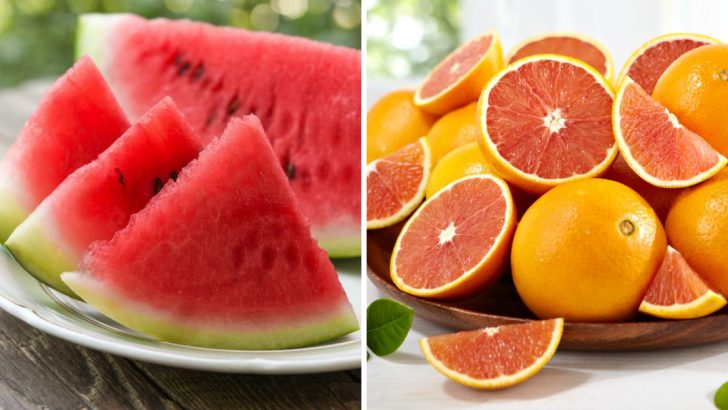Staying hydrated isn’t just about guzzling water all day. You can actually eat your way to better hydration! Many fruits and veggies pack a serious water punch, delivering essential nutrients while helping keep your body’s fluid levels topped up.
Ready to discover some juicy, crunchy, and downright delicious ways to stay hydrated? Let’s explore 20 foods that’ll quench your thirst and nourish your body at the same time.
1. Watermelon

Surprise! This summer picnic staple is actually 92% water, making it the heavyweight champion of hydrating foods. One juicy slice delivers more than just refreshment – it’s packed with vitamins A and C while containing barely any calories.
The ancient Egyptians placed watermelons in royal tombs to nourish pharaohs in the afterlife. That’s some serious hydration commitment! Modern science confirms what they intuited – this melon helps regulate body temperature during scorching days.
2. Cucumber
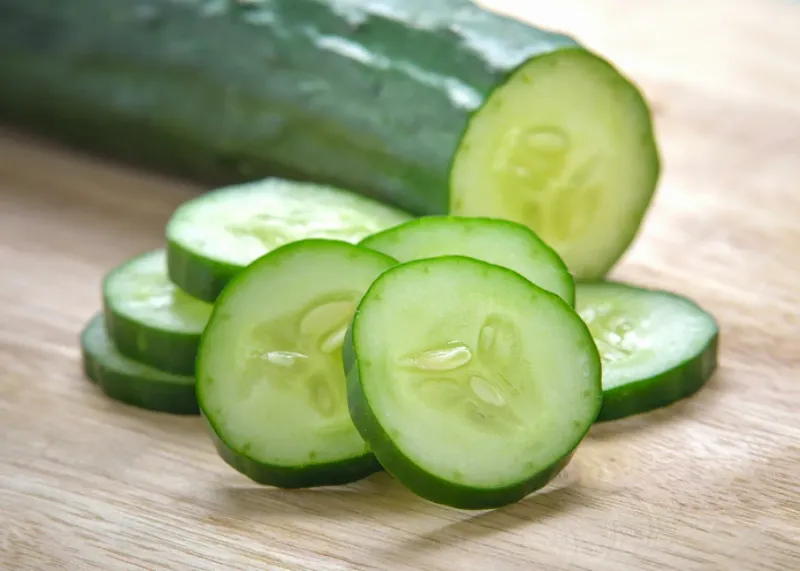
Crunch your way to hydration with these green cylinders of refreshment! At 96% water, cucumbers rank among the most moisture-rich foods on the planet. Their mild flavor makes them perfect for everything from salads to spa water.
The inside of a cucumber can be up to 20 degrees cooler than the outside air temperature! Leave the peel on to maximize fiber and nutrient intake. Those little bumps on the skin? They contain bitter compounds that can actually help with digestion.
3. Strawberries
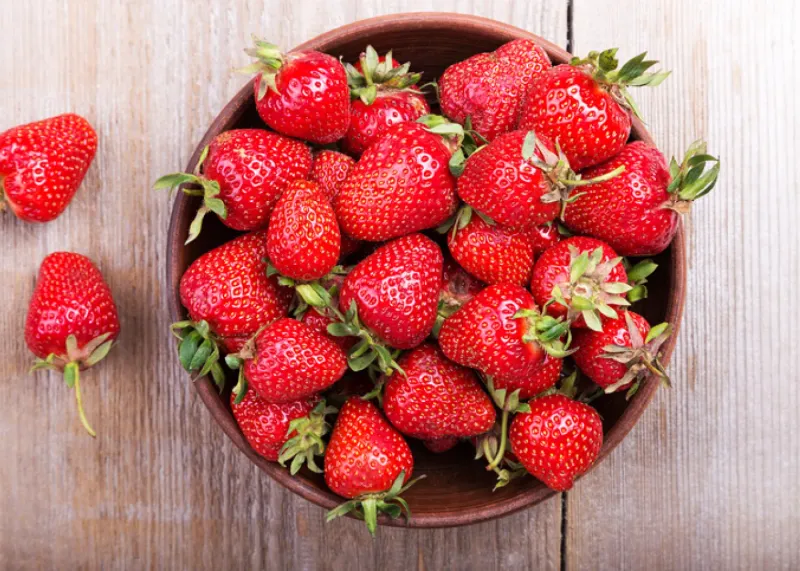
Tiny but mighty, these red berries pack a serious hydration punch at 91% water. Strawberries deliver more vitamin C than oranges per serving – one cup provides 150% of your daily requirement! Talk about multitasking.
Forget those giant, hollow supermarket imposters. The sweetest, juiciest strawberries are often the smallest ones. For maximum hydration and flavor, store strawberries at room temperature.
4. Celery
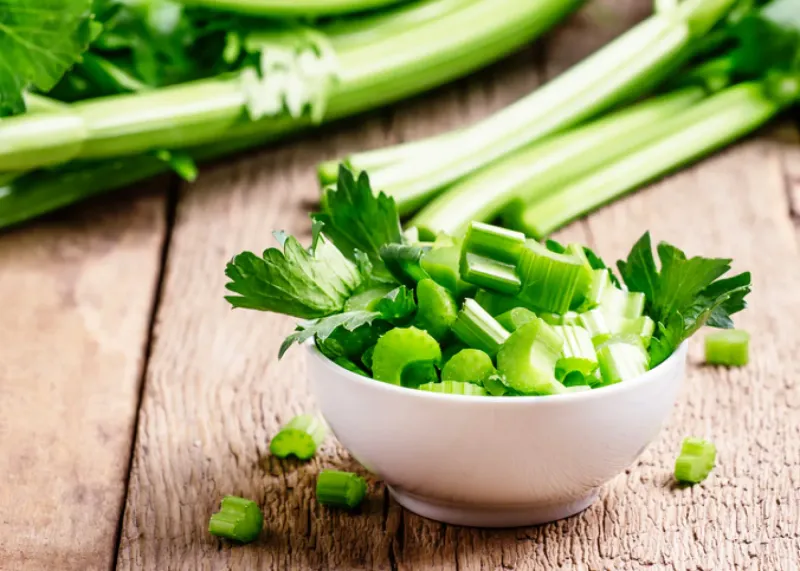
Myth alert! Celery doesn’t actually burn more calories to digest than it contains – but at 95% water, it comes pretty darn close to calorie-free hydration. Those satisfying crunchy stalks deliver a flood of moisture with each bite.
Modern science shows celery contains compounds that may help reduce inflammation and blood pressure. Don’t toss those leaves! Celery tops contain five times more magnesium and calcium than the stalks. Blend them into smoothies or use as herb-like garnishes for an extra nutrient boost.
5. Iceberg Lettuce
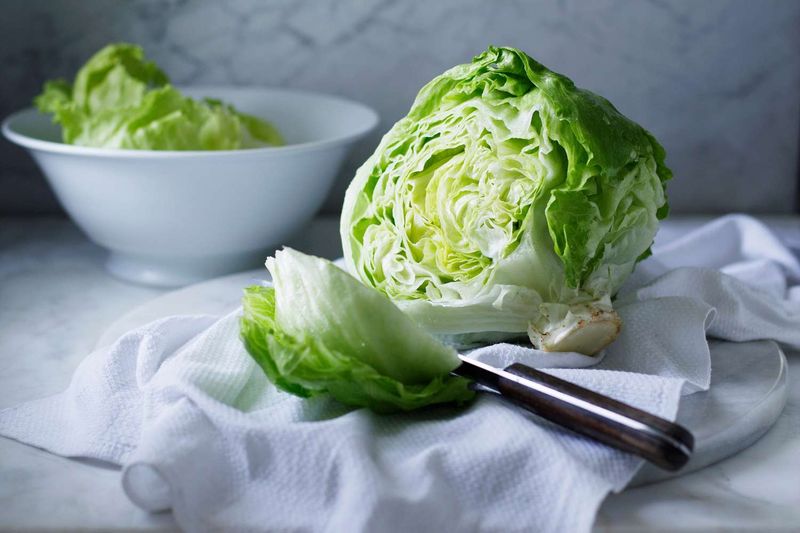
Nutritional snobs love to hate on iceberg lettuce, but with 96% water content, this crispy green deserves respect in the hydration department! While not as nutrient-dense as its leafy cousins, it still provides refreshing crunch with minimal calories.
The name “iceberg” comes from the way it was transported – packed in ice and shipped across the country, with just the tips visible above the ice like little green icebergs. Clever, right? Before refrigerated transport, this sturdy lettuce revolutionized American salads.
6. Tomatoes
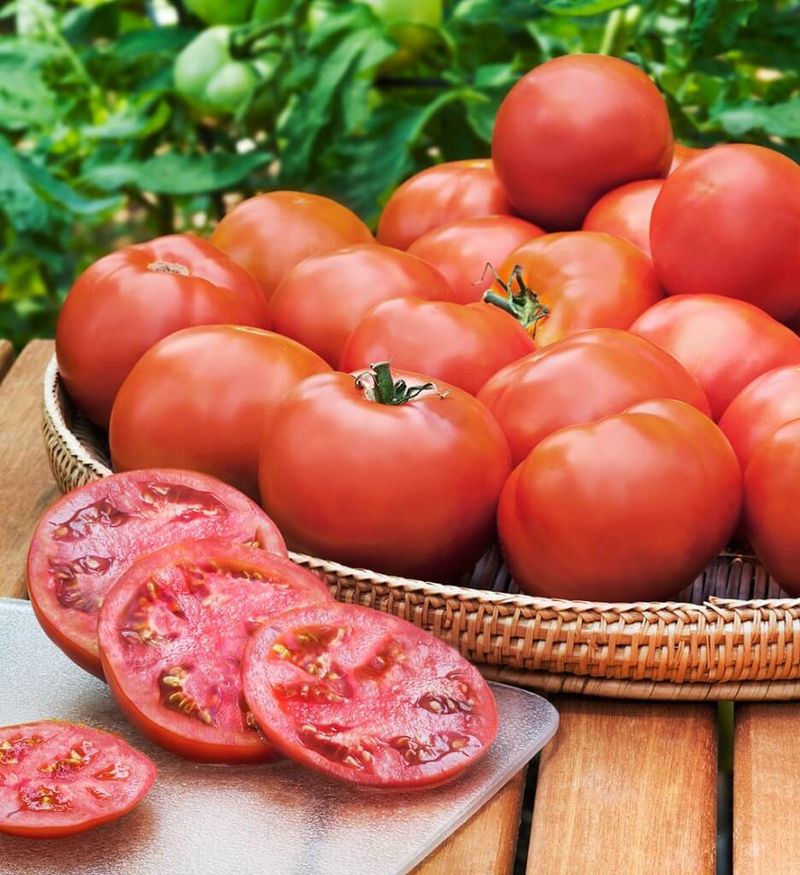
Botanically a fruit but culinarily a vegetable, tomatoes don’t care about labels – they’re too busy being 94% water and absolutely delicious! These red orbs deliver serious lycopene, a powerful antioxidant that actually increases when tomatoes are cooked.
For maximum juiciness, never refrigerate tomatoes. Cold temperatures destroy their flavor compounds and alter their perfect texture. Keep them stem-side down on the counter to prevent bruising and preserve moisture.
7. Zucchini
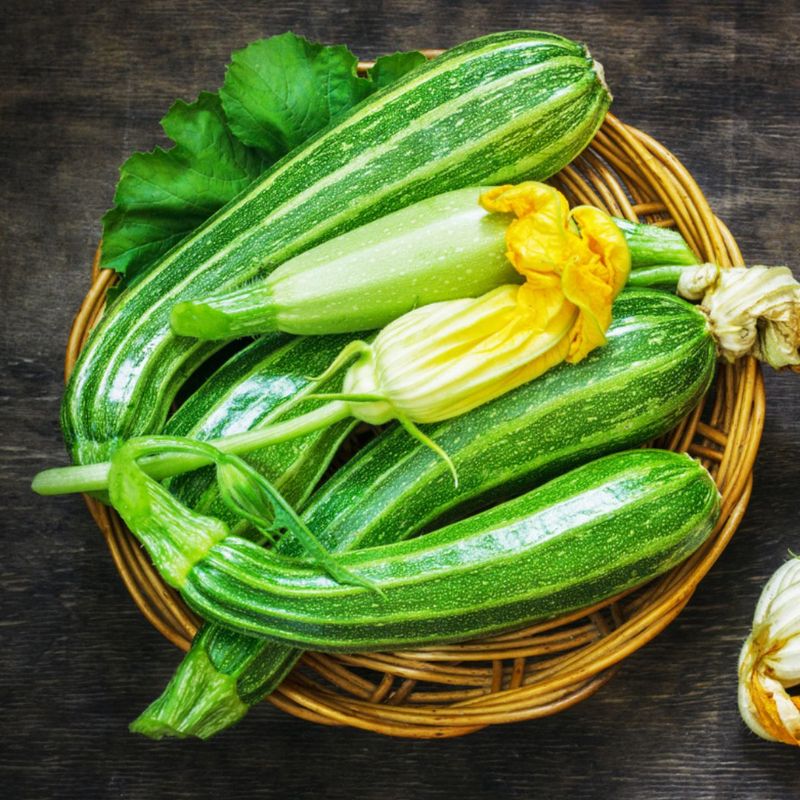
Zucchini might be the most versatile hydrator in your kitchen! At 95% water, these green squash can transform into noodles, chips, boats, or disappear completely into baked goods while delivering moisture. Talk about hydration ninja skills!
The current world record for largest zucchini? A monstrous 69.5 pounds! But size isn’t everything – smaller zucchinis (under 8 inches) actually taste better and have more nutrients. Those baseball bat-sized ones your neighbor keeps trying to give away? They’re mostly water and seeds.
8. Oranges
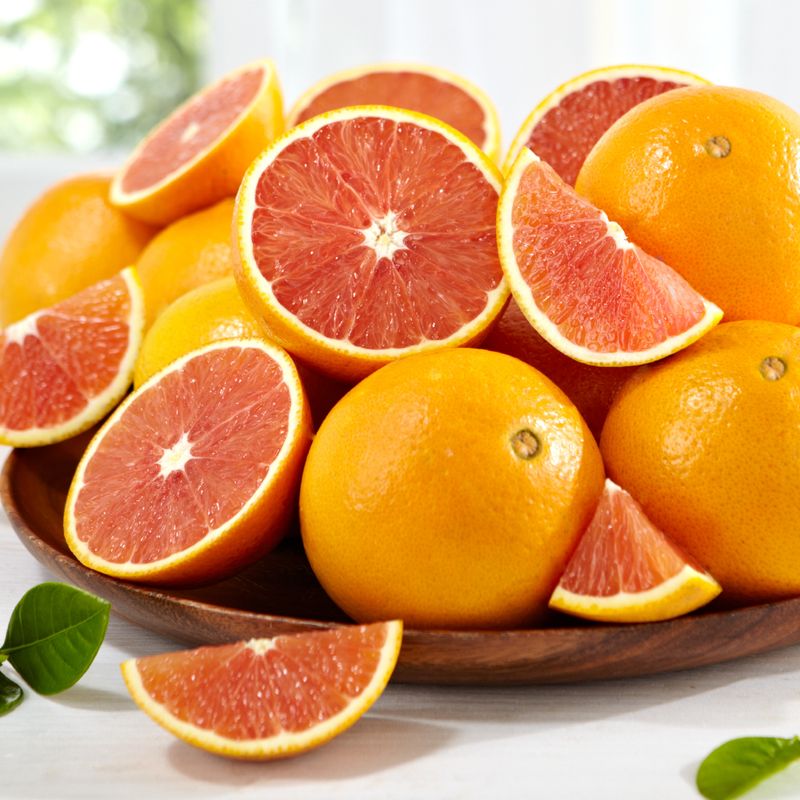
Mother Nature’s perfect snack comes in its own biodegradable wrapper! Oranges deliver 87% water content along with an immune-boosting vitamin C punch. Their natural sugars provide quick energy while their fiber slows absorption – the perfect hydrating pick-me-up.
Christopher Columbus brought orange seeds to America in 1493. Now Florida alone grows enough oranges to fill 100 million glasses of juice every day! The scent of oranges can actually reduce stress – hospitals sometimes use orange aromatherapy to calm anxious patients.
9. Bell Peppers
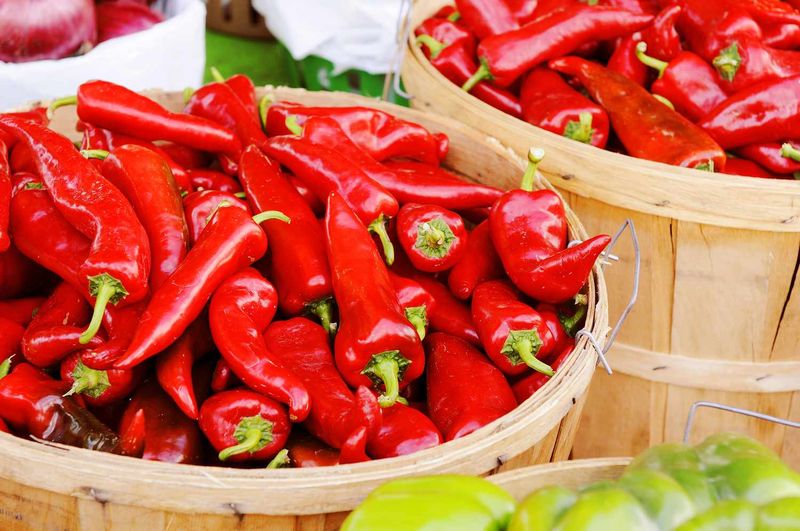
These crunchy, colorful veggies aren’t just pretty – they’re 92% water and packed with more vitamin C than oranges! Red bells contain the most nutrients, having ripened longest on the vine. Green peppers aren’t unripe – they’re just harvested earlier.
Store bell peppers stem-side up to prevent moisture from collecting inside and causing rot. For maximum hydration benefits, eat them raw – cooking reduces their water content and some nutrients, though it increases others.
10. Grapefruit
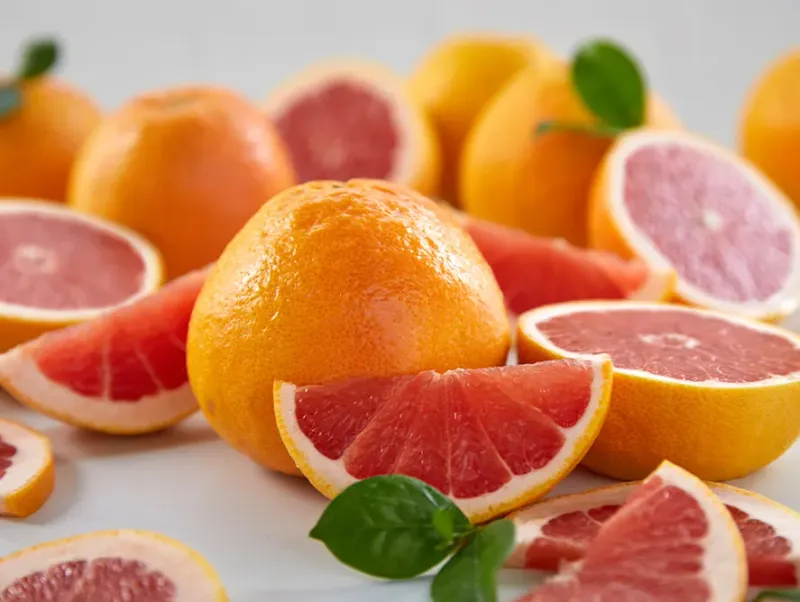
Half a grapefruit delivers a whopping 118ml of water – that’s nearly half a cup of hydration with your breakfast! This tangy citrus fruit earned its name because it grows in grape-like clusters on trees. Nature’s weird, huh?
Grapefruit comes with a warning label – it can interact with certain medications by blocking the enzymes that break them down. Always check with your doctor if you’re on prescription meds! For the rest of us, it’s a hydration superstar loaded with vitamin C and lycopene.
11. Peaches
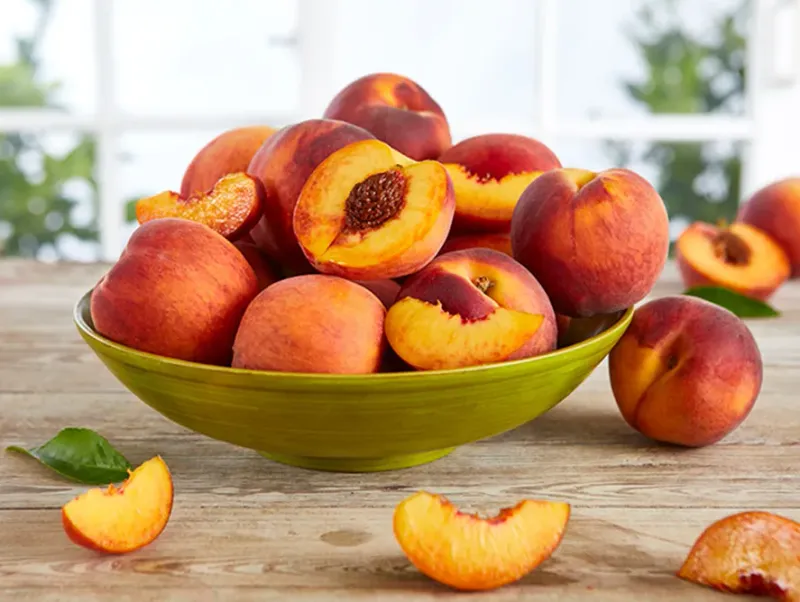
Sink your teeth into summer with these fuzzy delights that are 89% water! Peaches deliver hydration alongside potassium, which helps your body regulate fluid balance. Double win for thirst-quenchers!
Ripen rock-hard peaches by placing them in a paper bag with a banana. The banana releases ethylene gas, speeding up the ripening process. Once perfectly ripe, store them in the refrigerator to maintain that juicy perfection for a few extra days.
12. Cantaloupe
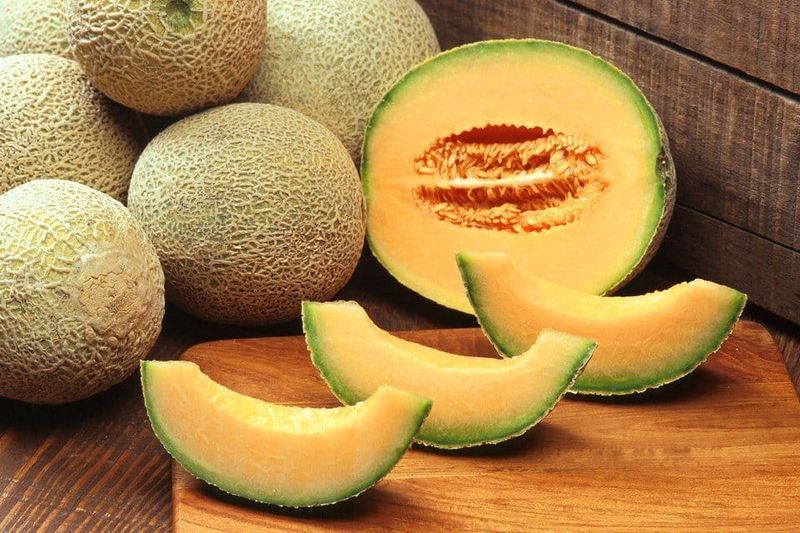
Morning hydration never tasted so good! This orange-fleshed melon delivers 90% water content and enough potassium to rival bananas. One cup provides more than half your daily vitamin A needs – crucial for eye and immune health.
Choose cantaloupes with a sweet, musky aroma and slight softness at the stem end. The netting pattern should be raised and pronounced. Store cut melon in the refrigerator to preserve its water content and prevent bacterial growth.
13. Pineapple
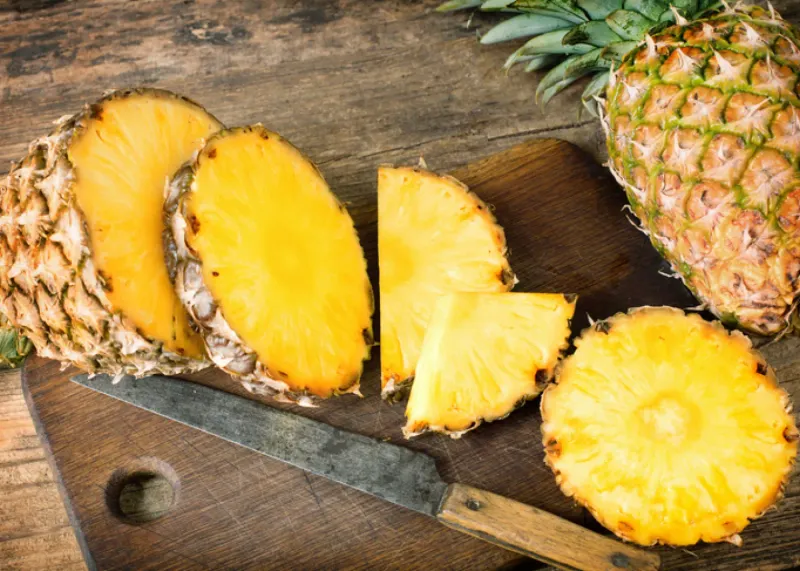
Feeling parched? This spiky tropical treat is 87% water and packed with bromelain, an enzyme that reduces inflammation and helps protein digestion. One cup delivers over 100% of your daily vitamin C needs!
Colonial Americans considered them such luxury items that hostesses would rent pineapples just for display at parties! Talk about prehistoric status symbols. Contrary to popular belief, pulling a leaf isn’t a ripeness test – instead, flip it over and smell the bottom for sweetness.
14. Broccoli
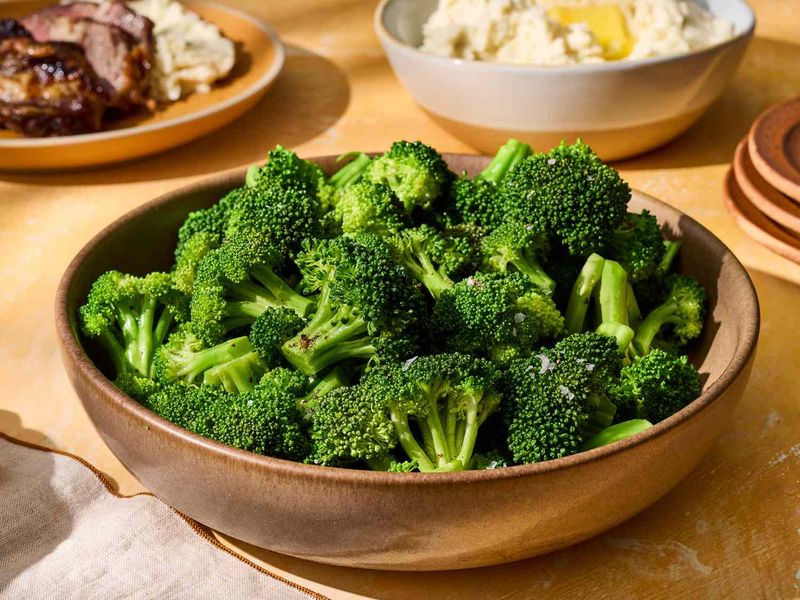
Plot twist: this crunchy green veggie is 90% water! Broccoli might not be the first food you think of for hydration, but it delivers moisture alongside fiber, vitamin C, and cancer-fighting compounds. Those little florets are basically tiny water reservoirs.
Broccoli is actually a human invention – ancient farmers in the Mediterranean selectively bred wild cabbage to create this nutritional powerhouse. Tom Hanks’ character in “Big” wasn’t wrong to hate it as a kid – children have more taste buds and can detect bitter compounds adults miss.
15. Apples
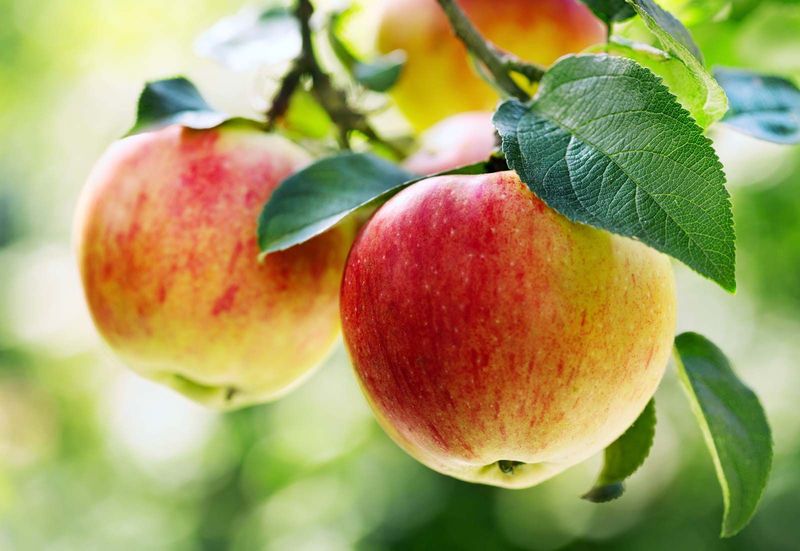
Crunch your way to better hydration! These portable snacks are 85% water and wrapped in fiber-rich skin that helps slow digestion for sustained energy. The natural sugars provide quick energy while the water content keeps you hydrated.
The average apple contains 25% air – that’s why they float in water! This evolutionary adaptation helped apple seeds travel downstream to new growing locations. Human domestication has created over 7,500 varieties worldwide, each with unique flavor profiles and water content.
16. Kiwi

Don’t let their small size fool you – these fuzzy little fruits pack serious hydration! At 83% water, kiwis deliver more vitamin C than oranges and more potassium than bananas, ounce for ounce. Their tiny black seeds contain omega-3 fatty acids for brain health.
Speed-ripen hard kiwis by placing them in a paper bag with an apple or banana. The ethylene gas released will work magic! Once ripe, refrigerate them to maintain water content for up to two weeks.
17. Spinach
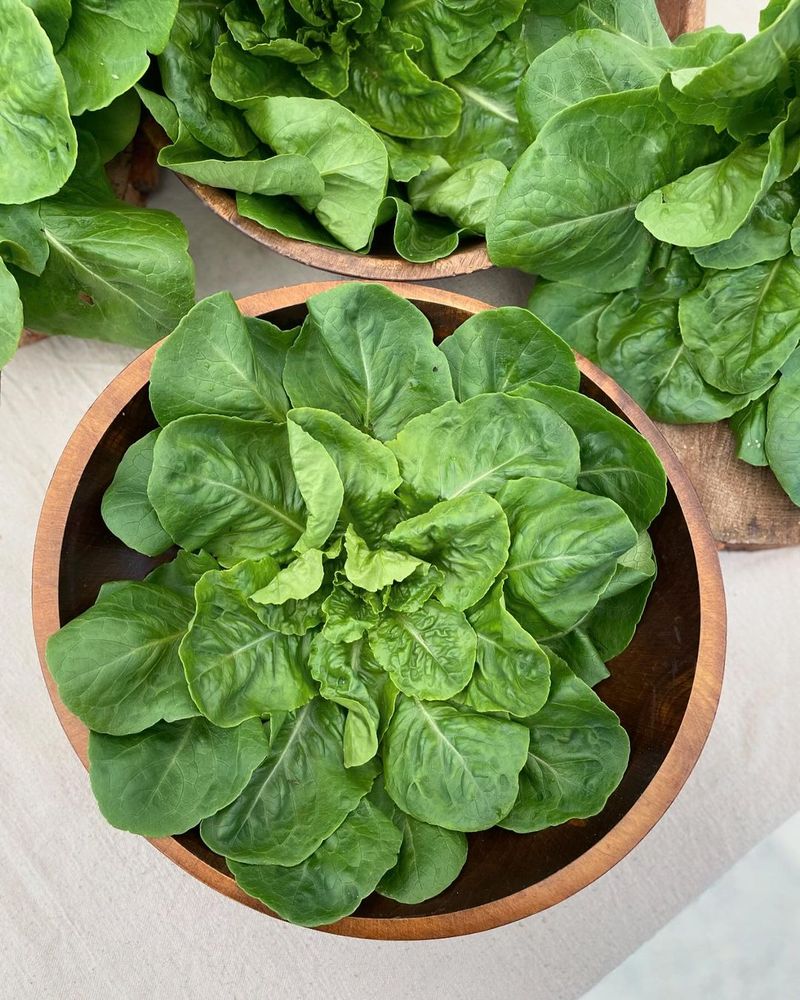
Popeye’s favorite food isn’t just for muscles – it’s 91% water! This leafy hydration hero packs more nutrition per calorie than almost any other food on earth. Iron, calcium, vitamins A, C, K… the list goes on while the calories stay incredibly low.
Maximize water content by eating spinach raw. When cooked, spinach releases much of its moisture – that’s why a massive pot of leaves wilts down to practically nothing. Store with a paper towel in a loosely closed bag to maintain freshness.
18. Blueberries
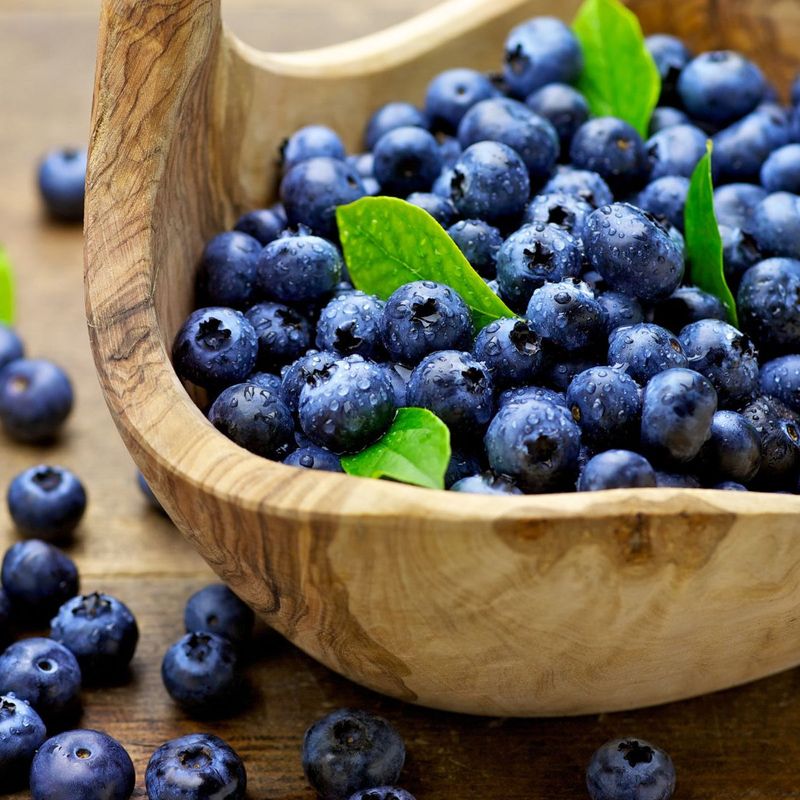
Pop these antioxidant powerhouses like nature’s candy! At 85% water, these little blue spheres deliver serious hydration alongside brain-boosting compounds. Native Americans once called them “star berries” because the blossom end forms a perfect five-pointed star.
Wild blueberries contain twice the antioxidants of cultivated varieties. They’re smaller but pack more nutritional punch per ounce! These mighty berries were once used to treat coughs and digestive issues by indigenous peoples across North America.
19. Carrots
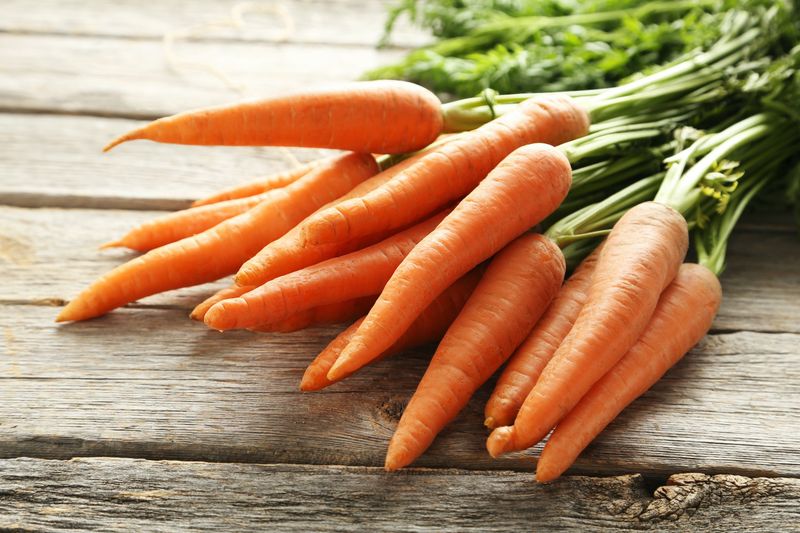
Rabbits know what’s up – these orange crunchies are 88% water! Carrots deliver moisture alongside beta-carotene, which your body converts to vitamin A for eye health. That old wives’ tale about night vision isn’t completely wrong!
Carrots weren’t always orange. Purple, white, and yellow varieties were common until Dutch farmers bred orange carrots in the 17th century to honor William of Orange. Talk about extreme patriotism! The original purple carrots actually contained different antioxidants than our modern orange versions.
20. Radishes
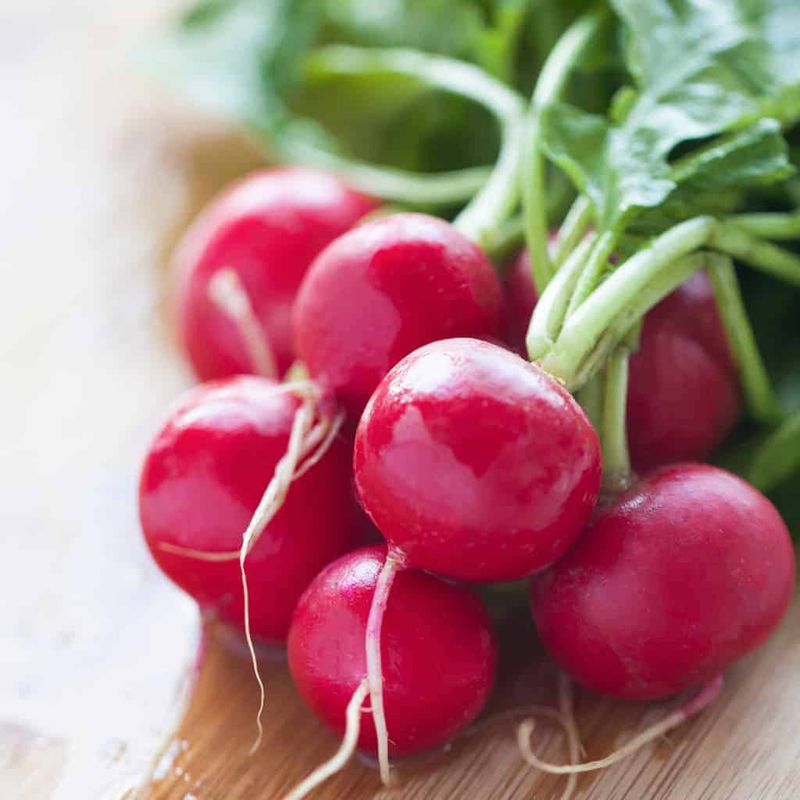
Fire and water combine in these crispy roots that are 95% water but pack a peppery punch! Radishes deliver serious hydration with practically zero calories, making them perfect for weight-conscious water-seekers. Their vibrant color comes from anthocyanins – powerful antioxidants.
Maximize crispness by storing radishes in cold water in the refrigerator, changing the water daily. Don’t toss those greens! Radish tops are edible and nutritious – use them like spinach in salads or sauté them for a peppery side dish.

